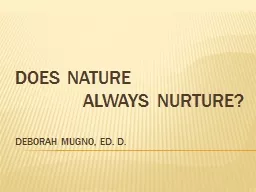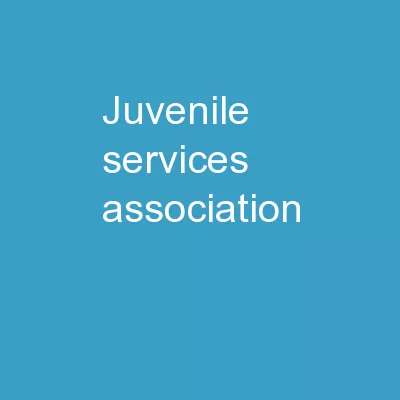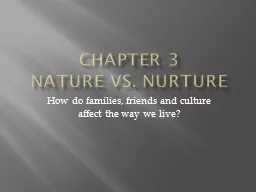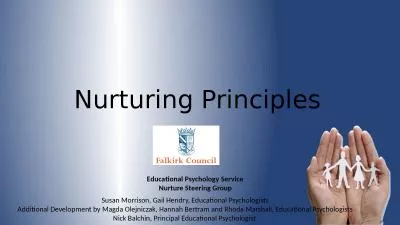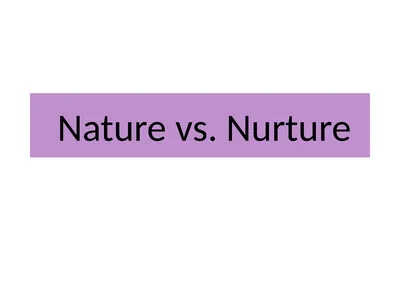PPT-Does Nature Always Nurture ? Deborah Mugno, Ed. D.
Author : faustina-dinatale | Published Date : 2019-11-02
Does Nature Always Nurture Deborah Mugno Ed D Helping Children with EmotionalBehavioral Problems Explore and Reap the Benefits of the Outdoors How can we assist
Presentation Embed Code
Download Presentation
Download Presentation The PPT/PDF document "Does Nature Always Nurt..." is the property of its rightful owner. Permission is granted to download and print the materials on this website for personal, non-commercial use only, and to display it on your personal computer provided you do not modify the materials and that you retain all copyright notices contained in the materials. By downloading content from our website, you accept the terms of this agreement.
Does Nature Always Nurture ? Deborah Mugno, Ed. D.: Transcript
Download Rules Of Document
"Does Nature Always Nurture ? Deborah Mugno, Ed. D."The content belongs to its owner. You may download and print it for personal use, without modification, and keep all copyright notices. By downloading, you agree to these terms.
Related Documents

